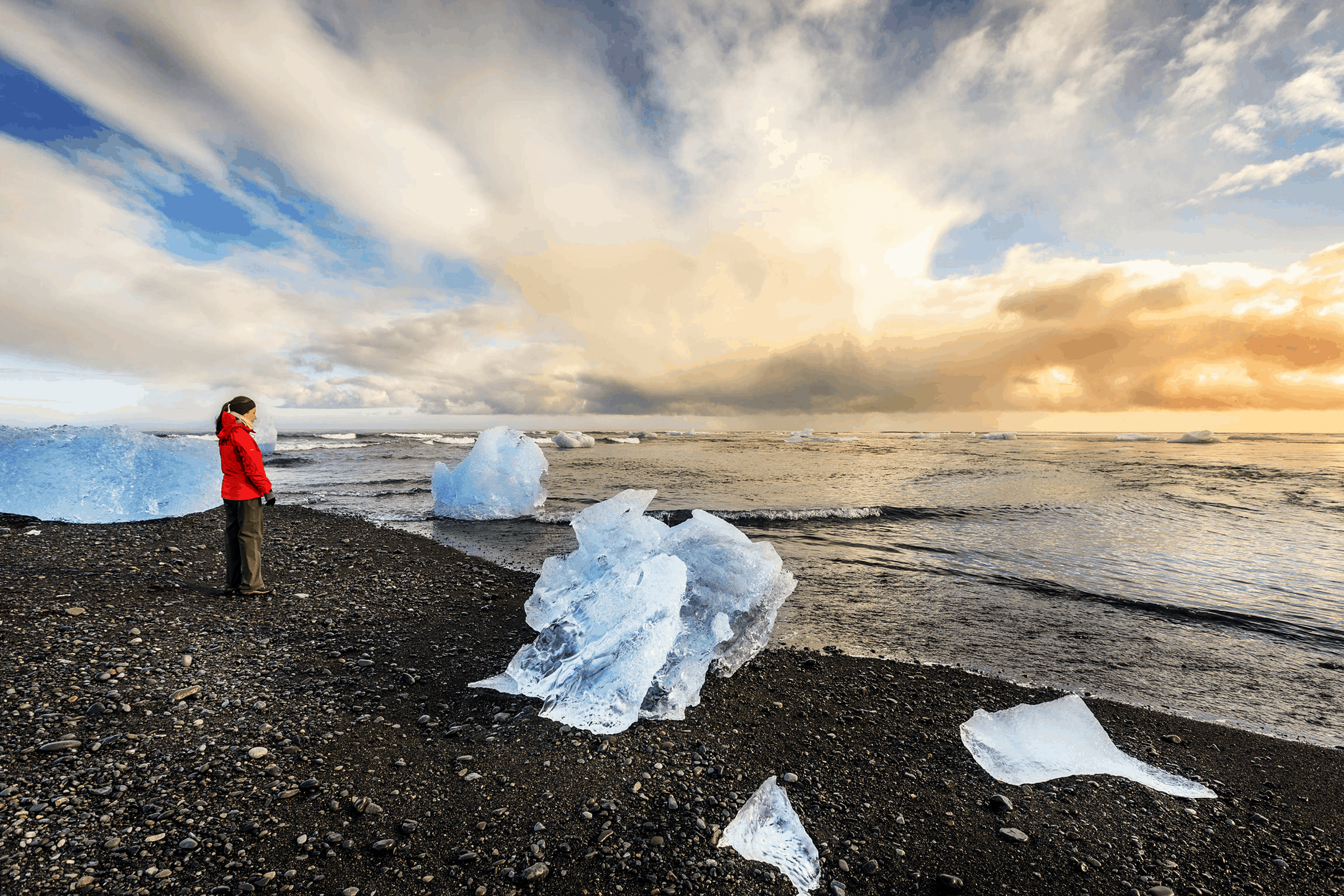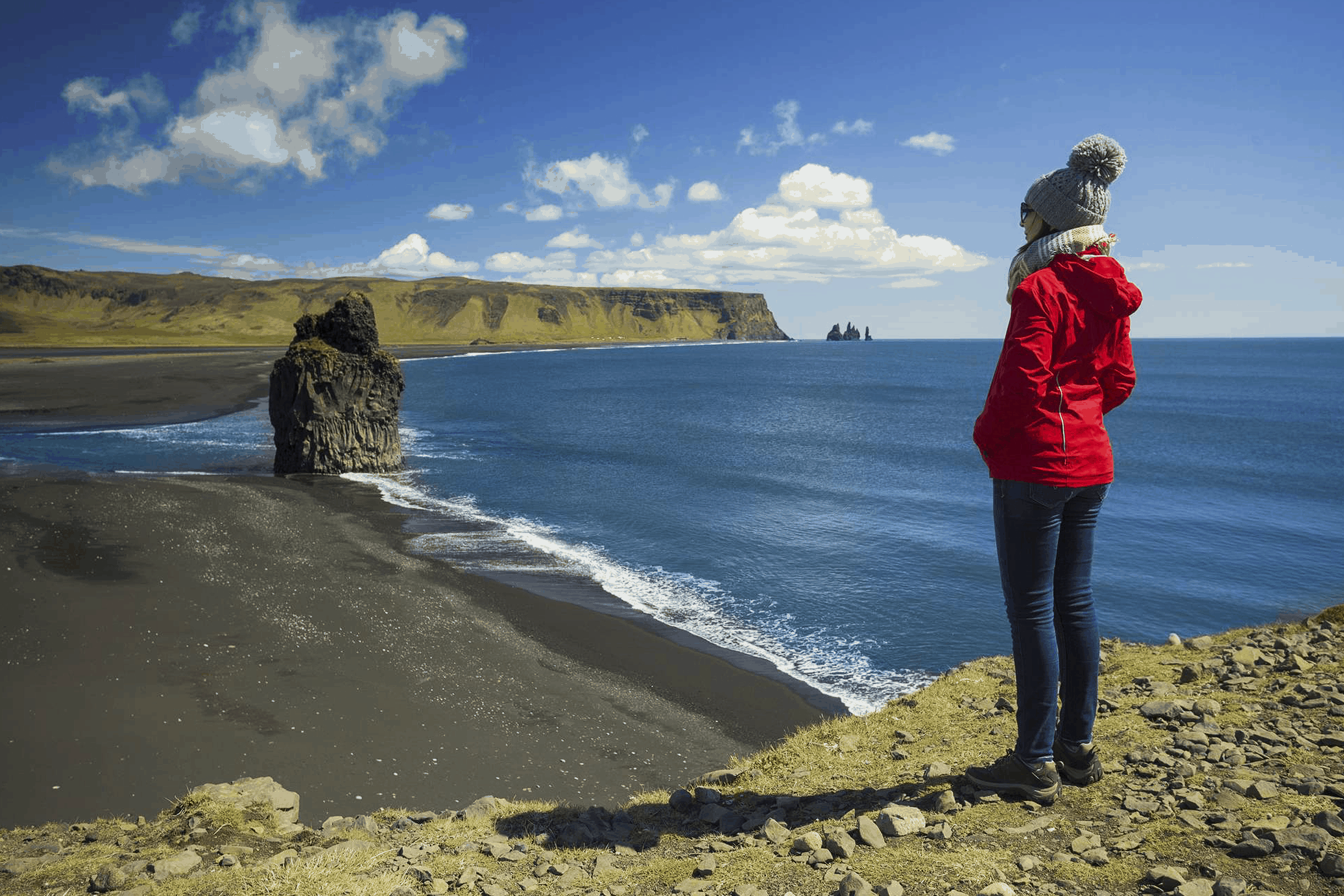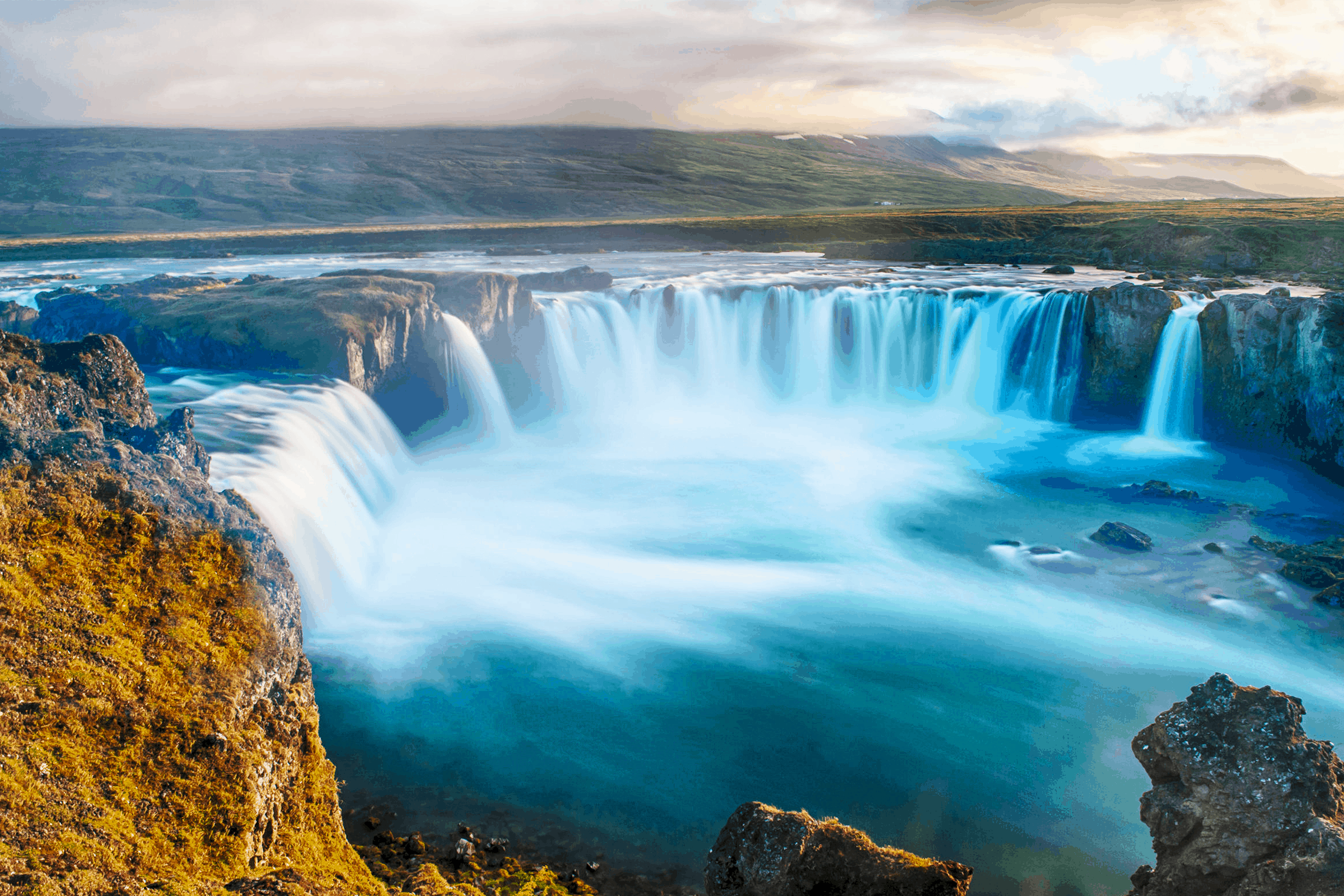Season and Climate
The chilliest thing about Iceland is its name! Despite its northerly location, Iceland is really more solar than polar. This is thanks to the warming effects of the Gulf Stream which provides a temperate climate year round. Icelandic weather is unusually volatile however.
The Gulf Stream brings mild Atlantic air in contact with colder Arctic air, resulting in frequent and abrupt weather shifts where you may experience four seasons in one day. The Icelanders often say, “If you don’t like the weather, just wait 15 minutes and you’ll get something different.”
Iceland does not have a rainy season, but precipitation peaks in October to February, with the southern and western parts receiving the most rainfall. The North, East and Interior experience colder winter temperatures but warmer summers, and noticeably less snow and rain.
Iceland’s most influencing weather element is the wind. The Icelandic language includes 156 words describing wind, e.g. logn (calm), gola (gentle breeze), rok (gale) and fárviðri (storm).
Seasons & Temperatures
Although Iceland is located just south of the Arctic Circle, it does have four distinct seasons which offer boundless adventure opportunities and dramatic displays of vibrant life.
Winter
Winters are remarkably mild with the average January temperature in Reykjavik (-0.5°C /31°F) similar to New York City or Hamburg. It is not unusual to see snow in October or April, but it rarely stays on the ground for more than a few days.
Outdoor life goes on as usual throughout winter when horseback riding, outdoor swimming and snow adventure activities take on an added element of excitement under the shimmering Northern Lights.
Our most popular winter tours are ‘Northern Lights Mystery‘ and ‘Winter Wonders and Delicious Detours‘.
Spring
Spring arrives in April when temperatures begin to warm up and nature awakens from its winter rest with sprouting green grass and flowers. April and May represent spring shoulder season for savvy travelers trying to score a travel deal before the summer tourists arrive.
Fishing, whale watching and golf season begin and migratory birds return to gradually greener pastures. On the mountain slopes the last of the snow melts and the fresh scent of spring fills the air.
Our most popular spring tours are ‘Golden Circle Self Drive‘ and ‘Golden Circle Classic‘.
Summer
In June summer takes over from spring, when meadows turn neon green and Viking horses and sheep are released to roam the countryside. Summers in Iceland can be delightfully warm plus the added bonus of the magnificent Midnight Sun which gives 24 hours of daylight and the excitement of midnight golf. It is the height of tourist season with most hotels and guest houses operating at peak capacity.
Our most popular summer tours are ‘Ring Road HIghlights‘ and ‘Inside the Volcano‘.
Fall
September and October bring cooler temperatures and the beginning of Northern Lights Season while daylight hours are still normal. The cultural calendar heats up with film, art and music festivals including Reykjavik’s favorite Iceland Airwaves.
Adventure activities are in full swing and it is a great time to take advantage of fall travel deals. The season brings marvelous beauty to the moss growing on ancient lava formations giving nature sites an added splash of autumn color.
Our most popular fall tours are ‘Iceland Complete‘ and ‘Whale Watching from Reykjavik‘.
Average Temperature in Reykjavik
| Jan | Feb | Mar | Apr | May | Jun | Jul | Aug | Sep | Oct | Nov | Des | |
| °C | -0,5 | 0,4 | 0,5 | 2,9 | 6,3 | 9,0 | 10,6 | 10,3 | 7,4 | 4,4 | 1,1 | -0,2 |
| °F | 32 | 32,5 | 35 | 39 | 44,5 | 49,5 | 53,5 | 51,5 | 47,5 | 41 | 34,5 | 33 |
The Icelandic Meteorological Office: www.vedur.is


